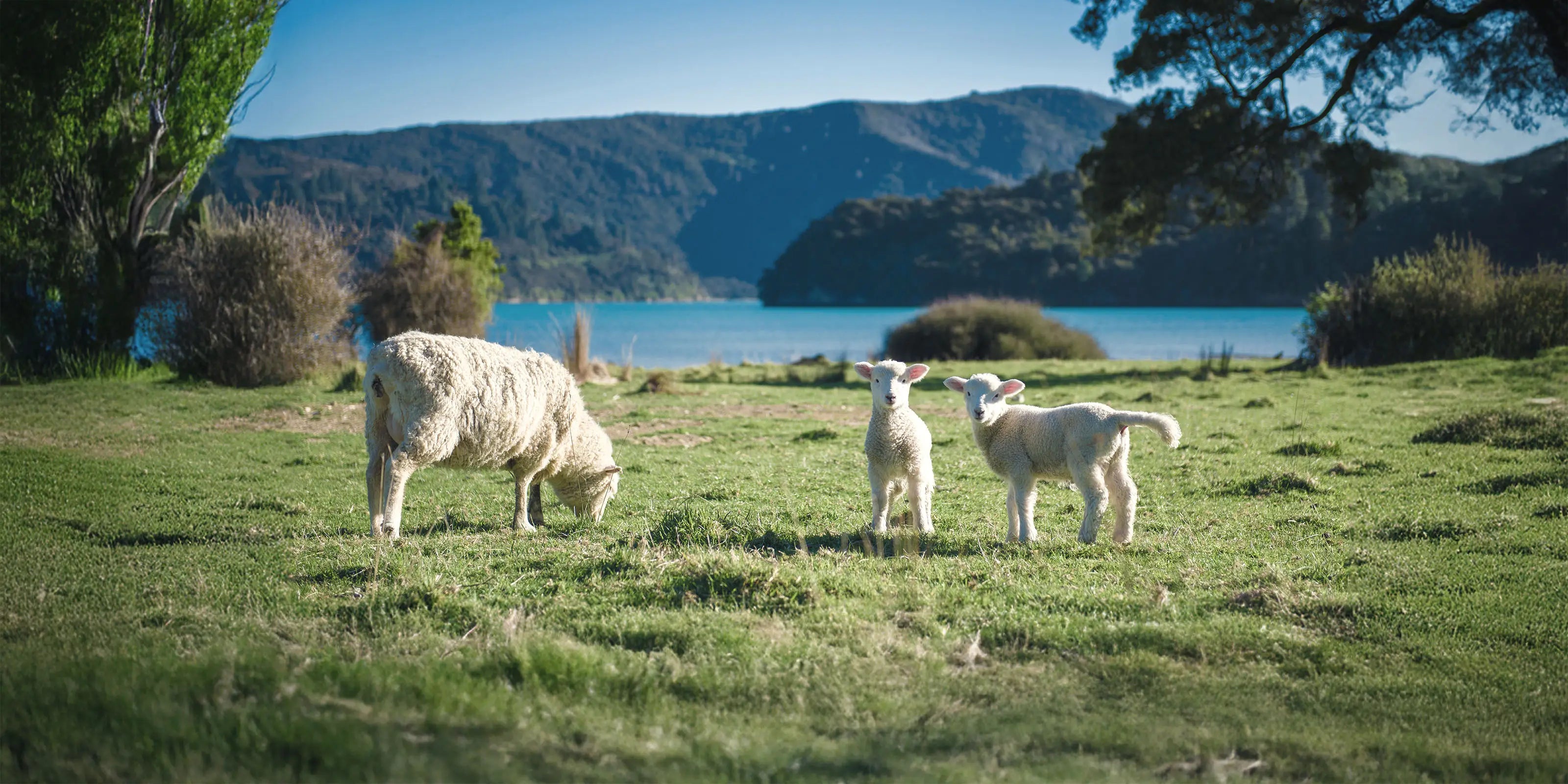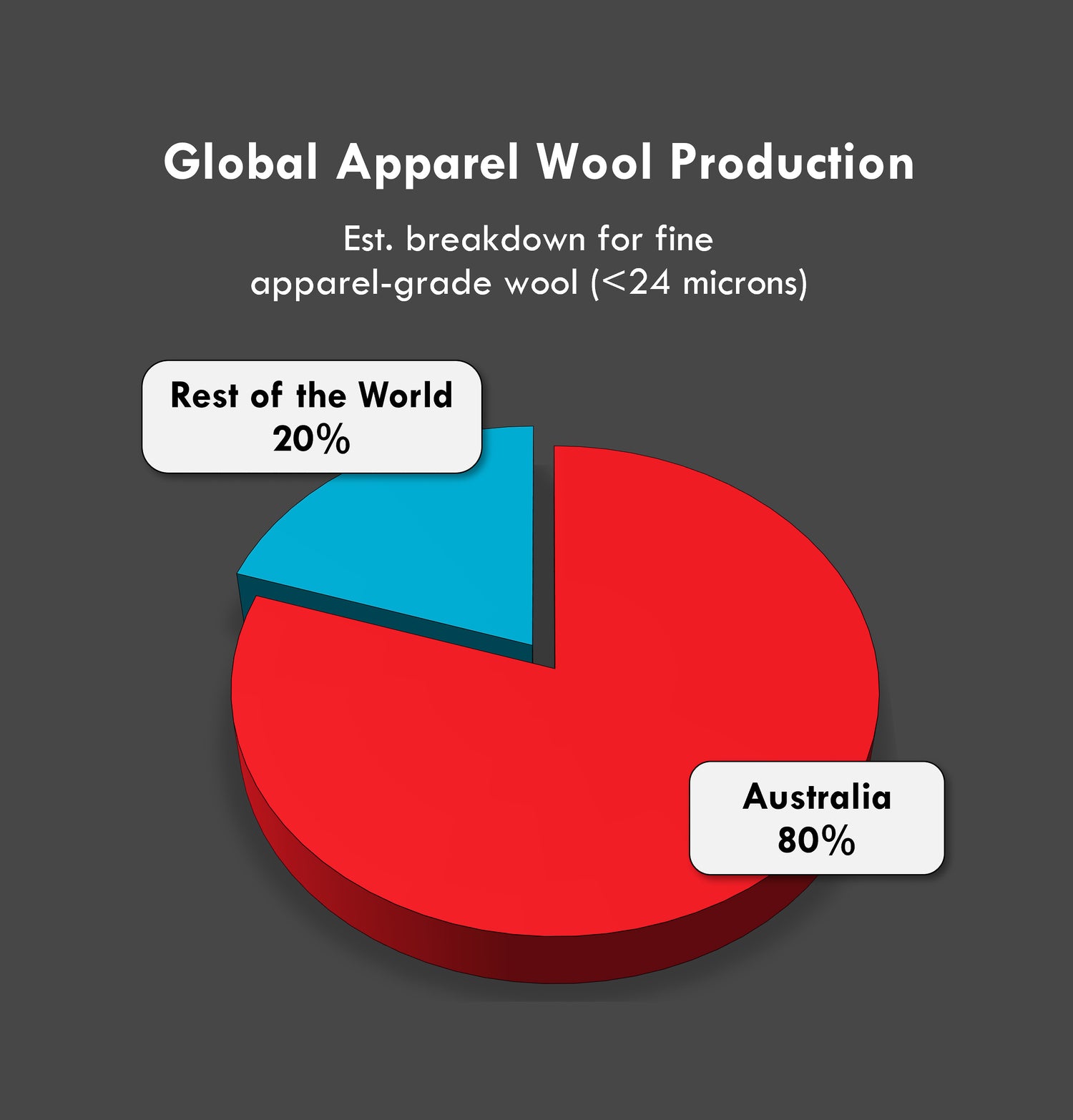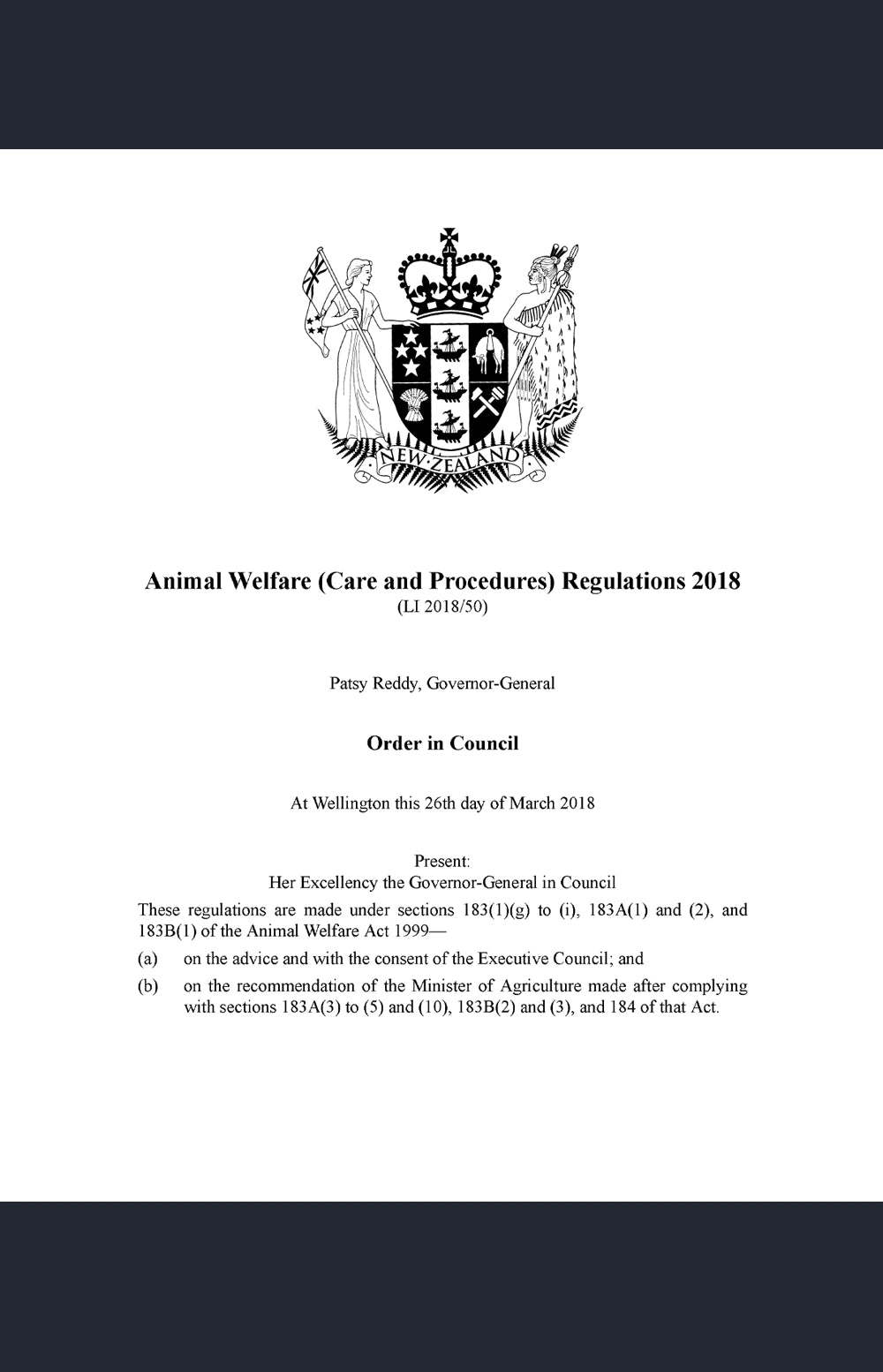
Ethical wool sourcing.
Our wool comes from mulesing-free New Zealand farms — combining premium fibre quality with a commitment to compassionate farming.
We need to talk about wool.
Most knitters wouldn’t knowingly support animal cruelty yet many unknowingly purchase yarns made with fleece from mulesed sheep. But would they be happy if they knew its journey?
Yarn by Clarke gives you the best of both worlds — the softness and strength of premium Southern Hemisphere wool, with the guarantee that no animal has been harmed in the process.
Unlike Australia, where mulesing remains legal and widespread, New Zealand law bans the practice outright. That’s why we source exclusively from New Zealand flocks, giving you full confidence that your yarn was sourced without cruelty, and in line with some of the world’s highest animal welfare standards.

The lion's share.
More than 80% of the world’s fine apparel-grade wool (typically under 24 microns in diameter, used in garments such as socks and knitwear) comes from Australia, where the controversial practice of mulesing is still widely performed.
Source: Australian Wool Innovation (AWI), International Wool Textile Organisation (IWTO), USDA Foreign Agricultural Service.
More About Mulesing
Read more
What is mulesing?
Mulesing is a surgical procedure where strips of skin are cut from around a sheep’s breech (backside) to prevent flystrike. Though its intention is preventative, the method is invasive and often performed without adequate pain relief. The wounds take weeks to heal, leaving lambs vulnerable to infection and prolonged distress.
Source: RSPCA Australia; Four Paws International.
Where does it happen?
- Australia: Still legal and widely practised, especially on Merino sheep.
- New Zealand: Banned since 2018. Mulesing is now illegal.
- South Africa, Argentina, UK, Uruguay: Mulesing is not practised due to different breeds, better climates, or higher animal welfare standards.
Source: International Wool Textile Organisation (IWTO); NZ Ministry for Primary Industries.
Why is mulesing considered cruel?
- Mutilation of live lambs, often without anaesthetic
- Intense pain and slow healing
- Alternative solutions exist: selective breeding, shearing, fly traps
Source: Humane Society International; Australian Veterinary Association.
Why hasn’t it been banned in Australia?
Despite global pressure, economic arguments and wool industry lobbying have delayed reform. Many farms continue mulesing while a growing minority adopts non-mulesed methods. Consumers and ethical brands are driving change.
Source: Australian Wool Innovation (AWI); People for the Ethical Treatment of Animals (PETA), Australia.

Getting it right.
New Zealand farmers manage flystrike through breeding, landscape management, and modern husbandry practices — without mutilation. With its ban on mulesing since 2018 and strict animal welfare laws, New Zealand offers a reliable, humane alternative.
- 100% non-mulesed
- OEKO-TEX® Standard 100 certified
- Fully traceable to farms in New Zealand
Choosing kinder wool shouldn’t cost more—and with us, it doesn’t. For the same price as ordinary wool, you can knit with something extraordinary—and peace of mind—at no extra charge.
Download Animal Welfare (Care and Procedures) Regulations 2018.

Find out more.
For more information about New Zealand farming practices, animal welfare and our commitment to sustainability and the environment, visit our 'Help' page.